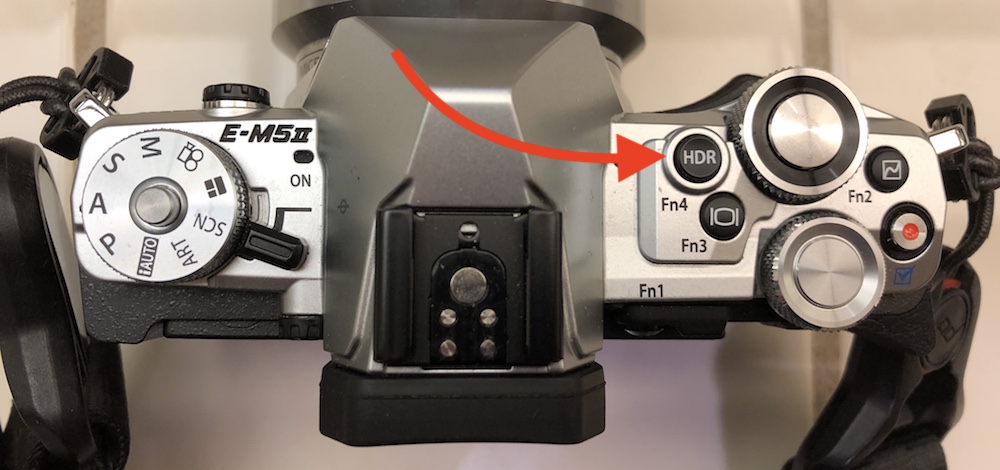It’s easy to get caught up in the rush to buy the newest gadget to replace your old one. The NosillaCast specializes in making you want to do it. When I got the Olympus OM-D E-M10 micro four-thirds camera in 2014, it was a delightful upgrade to my giant DSLR camera. It was light and very small and easy to throw in my bag or even in my purse.
Lately, I’ve been wondering though if I’m ready to graduate to the next model up in the Olympus line of micro four-thirds cameras. Olympus numbers them backward, the top of the line is the E-M1, the middle is the M5 and the beginner is the M10. I originally chose the M10 because it was the smallest and lightest, and compromised on some features because those were my highest priority items. But now I had my eye on the Olympus OM-D E-M5 Mark II.
I’m a member of a small but very active Google Plus community dedicated to Olympus Micro Four Thirds cameras run by Ananda Sim. Sometimes the smaller the niche, the more enthusiastic the people get. It’s a fantastic resource for everything about these cameras, so I wrote to them asking them to convince me that I needed to upgrade my camera. They use a term in there called “Gear Acquisition Syndrome”, also known as GAS. I figured they would come through for me.
Tony Tulloch gave me a few ideas on what improvements I could expect and it was enough for me to ask for it for Christmas. Santa Steve granted my wish.
I bring all this up not to give you a comprehensive review of the camera to but to tell you about something extraordinary I discovered while on our vacation to France. One thing I was looking forward to was more capability to jump right to specific settings with programmable buttons on the camera. With the E-M10 I was always hunting around in menus to change things like ISO and white balance. With the E-M5’s programmable buttons now I have a single button to tap that lets me change both of them with the front and back wheels.
 But that’s not why I’m writing either. There’s a positively magic button on the E-M5. It’s an HDR button. I had read up on what it was supposed to do right after Christmas but to be honest, the manual is pretty awful from Olympus and I never tested it out. But I did hit it accidentally while inside a church in Paris.
But that’s not why I’m writing either. There’s a positively magic button on the E-M5. It’s an HDR button. I had read up on what it was supposed to do right after Christmas but to be honest, the manual is pretty awful from Olympus and I never tested it out. But I did hit it accidentally while inside a church in Paris.
This button, when toggled on, tells the camera to take four shots at four different exposures, and merges them into a single high dynamic range image. Normally to create HDR images, you have to take separate photos and then at a later time merge them using software like Affinity Photo. Even with great tools, it’s an art form and one in which I’m not particularly skilled. Whether you want to simply create a realistic looking image with great shadows and bright areas, or whether you want to create something stylized, HDR takes a lot of time and learning and talent to perfect.

But with the magic button on the EM5, I was able to get some great images showing brilliant colors in stained glass windows along with internal shadow detail. I put a photo in the shownotes taken inside Notre Dame. There’s a statue gently lit by overhead lights, the left wall shows an ancient and quite faded painting in incredible detail and then stained glass windows are not blown out at all showing the intricate areas of each piece of glass.
The most amazing part of this capture is that it was hand held. I’m not some kind of a magician with ridiculously steady hands, this was all accomplished by the computer inside of the E-M5.
Let’s back up a little and talk about what’s going on in camera. When you toggle on HDR mode, the camera will now take four sequential shots at four different levels of exposure compensation. It calculates what that compensation is, based on the available light. It also chooses exposure times for the images. The maximum exposure time for each image is 1 second, and in the darkness of Notre Dame, that’s the time it chose. After taking the four seconds it took to take those four images, I had definitely moved significantly, which I could see in the viewfinder as it was working away.
Now that little computer inside the camera has to align the four images, then choose the low exposure for the bright spots and the high exposure for the darker areas. It also chooses the overlap of all of them, producing one single image that is the same pixel dimensions of a normal photo. It then saves that file as a JPG on the memory card. The entire process after the fourth image is taken is around one to two seconds!
If you have the camera set to take RAW photos before turning on HDR, it also saves one neutrally exposed RAW image. You basically have the best of both worlds that way. If you want to tone map the RAW image and see if you can beat the camera, you can still pursue that path.
I stumbled across this feature by mistake, and when I got back research assistant Steven Goetz made me read the manual again. I found out that if you hold down the HDR button there are more options available as you turn the two thumb dials. The default mode is HDR1 as described, while the HDR2 mode is a more artsy fartsy dreamy kind of HDR. If you like that kind of thing, you’ll probably want to process it yourself.
From this same menu, you can also choose to have the camera take a set of bracketed photos, keeping all of them for later processing in a piece of software like Affinity Photo. For example, it can take 3 exposures at +/- 2 EV.
None of this explains how a handheld one-second exposure came out tack sharp. The E-M5 Mark II (and previous versions) has 5-axis in body image stabilization. The 5 axes are 2 for translation up and down, and 3 for rotation in elevation, azimuth, and roll. My E-M10 did have in body stabilization but only for the 3 rotational axes.
In addition, the camera can be set to provide anti-shock protection. This mode tells the camera to wait for 1/8 of a second after I press the shutter (and invariably wiggle all over) and then take the photo. Not a great option to have on if you’re taking sports photography or trying to photograph a small child, but the statue at Notre Dame wasn’t going anywhere anytime soon.
I’ve got a lot to learn about what else this camera can do but having a single button I can press to capture difficult lighting scenarios makes me delighted I upgraded to the Olympus O-MD EM-5 Mark II from the EM-10.


The in-camera processing sounds terrific. I, too, ditched a large DSLR for a mirrorless camera a year ago. This is the first I’ve heard of good in-camera HDR software. I’ve been using Aurora HDR 2018 for post-processing HDR, but it can be somewhat time-consuming. I’ve liked your posted photos with your old camera(s). Thanks for this.
I enjoyed the article – it is highly informative.
I had to chuckle when you wrote that the manual from Olympus “is pretty awful.” You couldn’t have said it better, and I wish the brain trust at Olympus would write manuals in such a manner that their customers could easily understand.
Glad to know it’s not just me, John! I’m a member of an Australian Olympus Micro Four Thirds Google Plus community (how’s that for specialized) and I get way way way more information from them than I ever have from the manual! btw, I’m not from Australia, but they let me in anyway. Here’s a link if you’re interested: https://plus.google.com/communities/106106035089272652865
Thank you for the link. And you are absolutely right; a determined photographer can find more information about, say, the OMD system by reading about what other photographers have experienced. It’s a pity that Olympus – and the other major camera makers are just as guilty – will not produce a manual that clearly and concisely details what any one of the cameras it produces does. And yes, this means telling the customer about all of the shortcuts and techniques that the manual does not cover.
I know this sounds trite, and I sure hope that I don’t sound like I am ranting – but it seems to me that as customers we have the right to expect the very best from Olympus Cameras, a company that portrays itself as an industry leader.
Thanks for the read.